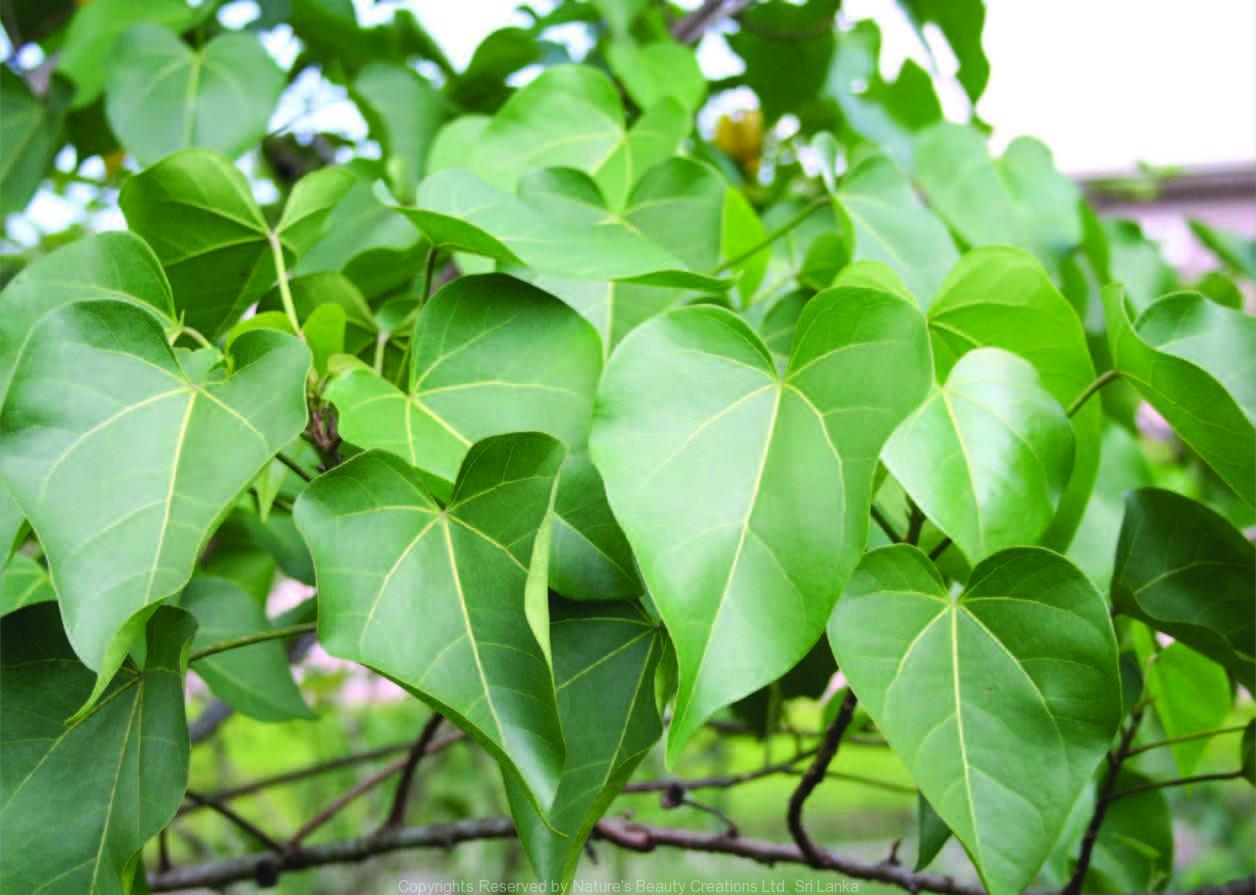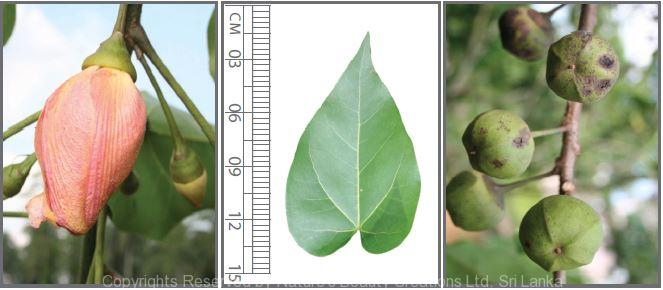

Traditional Knowledge
Useful plant parts :
Leaf and bark
Uses in traditional medicine :
- Bark powder in Mee oil is applied on broken bones
- Porridge prepared from young leaves is used as a blood purifier
- Leaves are used to treat ulcers
- Bark is used as an astringent, tonic and an alterative
Scientific Research
Chemical constituents:
Phenolic compound: gossypol, sesquiterpenes: populene A–H, quinines: mansonone D, E, H, thespone and thespesone from wood and heartwood; flavonoid: quercetin and its glycosides from flowers
Bioactivity :
Aqueous and alcohol extract of bark: antioxidative, memory enhancing activity, antinociceptive, anti-inflammatory; dichloromethane extract of wood and heartwood: cytotoxic against cancer cell lines; aqueous extract of fruits: wound healing; ethanol extract of flowers: antihepatotoxic; alcoholic extract of fruit pulp: antihyperglycaemic, antihyperlipidaemic; petroleum ether and ethyl acetate extracts of seeds: anti-implantation activity
Clinical:
References : Boonsri, S. et al., (2008), Cytotoxic and Antibacterial Sesquiterpenes from Thespesia populnea, Journal of Natural Products, 71(7), 1173- 1177. Ghosh, K. and Bhattacharya, T. K., (2004), Preliminary study on the antiimplantation activity of compounds from the extracts of seeds of Thespesia populnea, Indian Journal of Pharmacology, 36(4), 288-291. Ilavarasan, R. et al., (2003), Antioxidant activity of Thespesia populnea bark extracts against carbon tetrachloride-induced liver injury in rats, Journal of Ethnopharmacology, 87, 227–230. Johnson, I. J. et al., (1999), Cytotoxicity and superoxide anion generation by some naturally occurring quinones, Free Radical Biology and Medicine, 26(9-10), 1072-8. Nagappa, A. N. and Cheriyan, B., (2001), Wound healing activity of the aqueous extract of Thespesia populnea fruit, Fitoterapia, 72(5), 503–506. Satyanarayana, T. et al., (2004), Antihyperglycemic and hypoglycemic effect of Thespesia populnea fruit in normal and alloxan-induced diabetes in rabbits, Saudi Pharmaceutical Journal, 12(2-3), 107-111. Shirwaikar, A. et al., (1995), Chemical Investigation and Antihepatotoxic Activity of Thespesia populnea, Pharmaceutical Biology, 33(4), 305-310. Vasudevan, M. et al., (2007), Antinociceptive and anti-inflammatory effects of Thespesia populnea bark extract, Journal of Ethnopharmacol- ogy, 109, 264–270. Vasudevan, M. and Parle, M., (2006), Pharmacological actions of Thespesia populnea relevant to Alzheimer’s disease, Phytomedicine, 13, 677–687.
Copyrights Reserved By
Natures Beauty Creations



